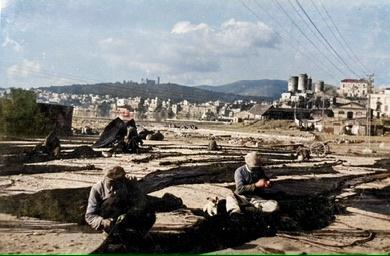What impact did women's agricultural work have on the overall family economy in Mallorca during the early 1900s?
Similar Topics
women's agricultural work
mallorca family economy
early 1900s farming
rural women labor
agriculture and family
subsistence farming mallorca
women's role agriculture
mallorcan rural economy
In Mallorca during the early 1900s, women's agricultural work played a crucial role in sustaining the family economy, especially in rural areas where farming was the primary livelihood. Women’s contributions often extended beyond mere labor; they were involved in planting, tending, and harvesting crops, as well as rearing livestock. This work was essential for both subsistence and commercial purposes. Their efforts helped ensure a consistent supply of food for the household, reducing the need to purchase goods and thus easing financial pressures. In addition, women frequently processed agricultural products, such as preserving fruits or preparing wool, which added value to the farm’s output and provided supplementary income.
The economic impact of women’s agricultural labor was significant in stabilizing and sometimes improving the standard of living for many Mallorcan families. In a period marked by limited industrial development and scarce alternative employment opportunities, women’s work contributed to the resilience of the family unit. Their involvement allowed men to focus on more physically demanding tasks or on seeking seasonal work elsewhere. Moreover, women often managed the delicate balance between farm duties and household responsibilities, demonstrating a remarkable capacity for multitasking that supported both production and domestic needs. This dual role underscored the importance of women not only as laborers but also as central figures in maintaining the family’s overall well-being.
Overall, the contributions of women to agriculture were indispensable in shaping Mallorca’s rural economy during this era. Their labor helped maintain agricultural productivity, contributed to family income, and ensured food security in often challenging economic conditions. Recognizing the vital role of women’s agricultural work provides a more complete understanding of the social and economic fabric of early 20th-century Mallorcan life, revealing a community where family survival and prosperity heavily relied on the collaboration and hard work of all its members.
The economic impact of women’s agricultural labor was significant in stabilizing and sometimes improving the standard of living for many Mallorcan families. In a period marked by limited industrial development and scarce alternative employment opportunities, women’s work contributed to the resilience of the family unit. Their involvement allowed men to focus on more physically demanding tasks or on seeking seasonal work elsewhere. Moreover, women often managed the delicate balance between farm duties and household responsibilities, demonstrating a remarkable capacity for multitasking that supported both production and domestic needs. This dual role underscored the importance of women not only as laborers but also as central figures in maintaining the family’s overall well-being.
Overall, the contributions of women to agriculture were indispensable in shaping Mallorca’s rural economy during this era. Their labor helped maintain agricultural productivity, contributed to family income, and ensured food security in often challenging economic conditions. Recognizing the vital role of women’s agricultural work provides a more complete understanding of the social and economic fabric of early 20th-century Mallorcan life, revealing a community where family survival and prosperity heavily relied on the collaboration and hard work of all its members.
🧩 Related Questions
Related Question
How do nocturnal birds feature in Mallorca’s artistic expressions, such as paintings, music, or literature?
Related Question
How is the local government in Mallorca addressing the issue of aquifer overextraction?
Related Question
Are there any local festivals or events near Algaida and Montuïri that highlight the region’s heritage connected to the bull figure?
